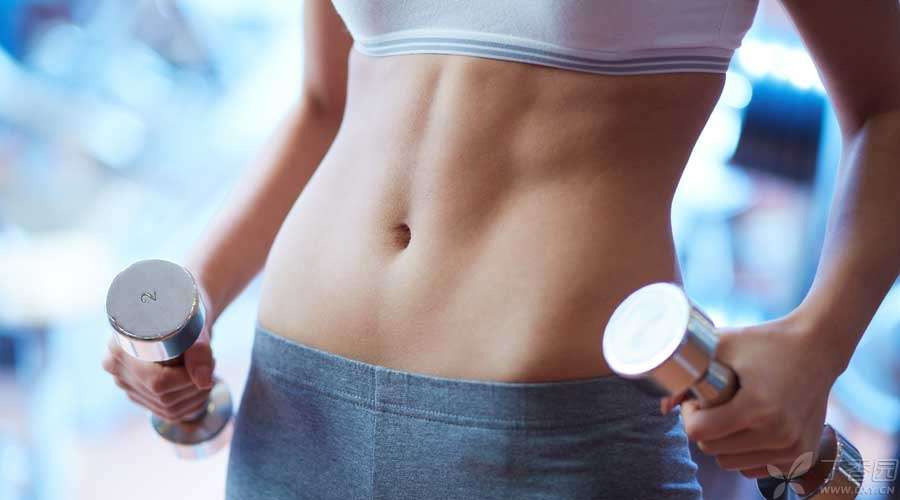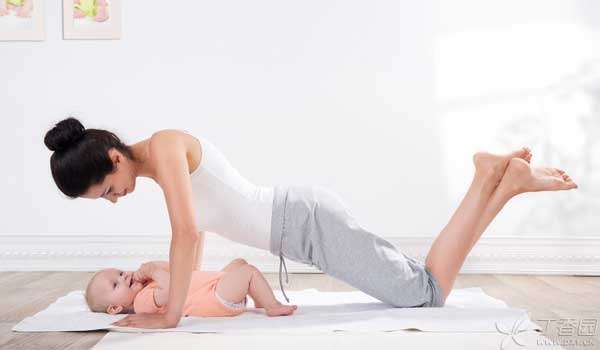
When it comes to postpartum recovery, the first thing that comes to mind is the recovery of body shape.
In fact, [postpartum recovery] also includes the recovery of various systems and organs of the body, including:
- The uterus is restored from the pregnant state to the pre-pregnant state. The pelvic muscles are restored. The strength of the elastic abdomen and back muscles weakened by childbirth is restored.
These are all very important.
The normal [puerperal period] is just 6 weeks after giving birth to the baby. Within this 6 weeks, the various systems and organs of the parturient have not fully recovered from the state before pregnancy and cannot start exercising like normal people. During this period, some simple actions can be carried out to exercise the strength of various parts, burn calories and promote physical recovery.
Kegel’s action
This is the most important action for postpartum recovery and can be started 24 hours after delivery.
In short, it is the action of contracting the muscles at the bottom of the pelvis, which can exercise the relaxed pelvic muscles after delivery.
Postpartum women, especially those who give birth smoothly, some of them will suffer from slight urinary incontinence after delivery. When sneezing, coughing or exerting force, they will have slight leakage of urine. This action is very helpful to relieve this situation. At the same time, it can also improve vaginal relaxation and long-term sexual life quality.
Pelvic muscle is often neglected muscle group, can experience the contraction of pelvic muscle through this method: when urinating, in the middle of urination, force contraction of urethra, anus near the muscle, interrupt urination. At this time, the contraction of pelvic muscle can be felt most.
Remember this feeling, then you can lie in bed and practice, shrink the pelvic muscles with your greatest strength every time, then stick to it for as long as possible, then relax, do it 10 times in groups, and do it in 3 groups every day.
Walk
Although it doesn’t sound like an exercise, walking is the best aerobic exercise for parturients.
Try to walk slowly from the moment you can get out of bed. First, do a small number of activities beside the bed to gradually increase the walking time and speed.
If you feel too boring walking back and forth in the room without discomfort such as dizziness and slow reaction, you can try walking backwards and in the shape of a zigzag.
By the way, walking with the child in your arms can achieve better exercise effect.
Learn Abdominal Breathing
During pregnancy, abdominal pressure increases. Many pregnant women, in order to adapt to this change, adopt chest breathing, which is to use chest muscles to drive breathing. After delivery, abdominal pressure decreases, and you can try to use abdominal breathing to help abdominal organs restore their original positions, muscle restore strength and elasticity, and promote uterine rejuvenation.
One hour after delivery, conscious abdominal breathing can begin.
When inhaling, consciously bulge your stomach slightly; When exhaling, you will consciously contract your stomach. In the first few days after delivery, you may suffer from uterine contraction pain due to uterine contraction. You can do what you can and gradually begin to take deep breaths. You can practice on your back at the beginning, and then you can practice consciously when nursing and walking.
If you can form habits, it is also very helpful to keep your abdomen firm for a long time.
Raise one’s head, shoulder, abdomen
These three movements are gradually completed, mainly to exercise abdominal muscles.
Step 1: Raise your head
Lie on your back on the bed with your hands on both sides of your body, your legs bent, and your feet on the bed surface. Inhale first, contract your abdomen when exhaling, and slowly raise your head and neck. Then inhale and lower your head and neck.

Step 2: Lift your shoulders
When you can easily and effortlessly complete 10 consecutive head-up movements, you can try this movement in the same posture as the previous movement. Inhale, shrink your abdomen when exhaling, lift your head and shoulders, try to reach your knees with both hands, then inhale and slowly lower your shoulders.

Step 3: Roll the abdomen
Similarly, when you can easily and effortlessly complete 10 shoulder lifting movements in a row, you can try the best exercise of abdominal muscles-abdominal rolling.
The posture is still to lie on your back on the bed, with your legs bent, your feet on the bed surface, and your hands on both sides of your body. Inhale first, shrink your abdomen when exhaling, lift your chest, shoulders and head to an angle of 45 degrees with the ground, hold on for two seconds, and then slowly lower them.

The most important thing in these movements is not how high the shoulders or chest are lifted, but to feel the power of abdominal muscles.
At the beginning, it should be carried out according to one’s own ability. Don’t be greedy for too much and too fast. You can practice a small number of times in a day.
Lift one’s buttocks
Don’t ignore this simple action, it can exercise the muscles of the lower back and relieve lumbago.
Lie on your back on a hard board bed with your upper body close to the bed surface, your legs bent, your feet on the bed, your arms flat on both sides of your body, and your palms facing down. When inhaling, lift your buttocks up and feel the whole pelvis facing the front and top of your body. Hold on for 3 seconds, then put down.
Can do 15 times in a row as a group, 3 groups a day. According to one’s ability, it is also possible to do less.

Exercise with your baby while playing.
Six weeks after delivery, most new mothers have passed the puerperium. After the obstetrician has given you a physical examination and confirmed that there is no problem, they can start exercising like ordinary people.
If there is regular physical exercise before pregnancy, then you can begin to slowly resume the exercise before pregnancy. If there is no regular exercise habit before pregnancy, it is recommended to start systematic postpartum recovery training under the guidance of fitness professionals.
For new mothers, it is not necessary to go out for a run or go to the gym to exercise, but also at home. You can also take exercise time as playing time with your baby. Especially when your baby’s neck is fully developed at 3 or 4 months old, you have also recovered some strength. Under the condition of ensuring safety, some movements can be completed together with your baby.
These movements are similar to the weight-bearing training effect in the gym.
Exercise of the chest
Lie on the bed or floor, hold the baby’s armpit with both hands, close to your chest, inhale, slowly lift the baby when exhaling-be careful not to straighten your arms completely-then inhale, then slowly put the baby on your chest, rest for a while, and then do the next one.
According to one’s ability, one can do 8 ~ 15.
Exercise the legs and hips
- The baby squats with arrow steps: stand on the floor, hold the baby in front of his chest, then lunge and squat down with one leg moving forward, paying attention to the knee not exceeding the toe, the knee of both legs is 90 degrees, then stand up and withdraw the leg, then change to the other side, according to his ability, one side can do 8 ~ 10.
- Baby squat: hold up the baby’s armpit with both hands, hold the baby in front of the chest, and then sit back on the buttocks, as if there is a chair behind, pay attention to the knee as far as possible not to exceed the toes, squat down to the extent that the thighs are parallel to the ground, and then get up. According to your ability, you can do 10 ~ 15 at a time.
Precautions during Exercise
- If it is not a normal natural delivery, For example, cesarean section, Or other diseases during pregnancy or delivery, It is best to consult an obstetrician first, Exercise again. The [bed] mentioned here is a hard board bed, which cannot be used for exercise on a bed that is too soft. If the bed is too soft, it is OK to spread yoga mat and practice on the floor. All the movements done together with the baby need the mother to master the essentials of the movements and have enough strength to complete them together with the baby. Safety is the most important thing.

Although the traditional concept requires rest after delivery, the current sanitary and medical conditions are much better than before. Moreover, proper activities after delivery are not only conducive to the recovery of body shape, but also, more importantly, can prevent the occurrence of thrombosis, help various organs to recover their prenatal state and prevent constipation, which is very important to the health of parturients.
So, new mothers, for the sake of beauty and health, move!
Responsible Editor: Zhang Jingyuan
